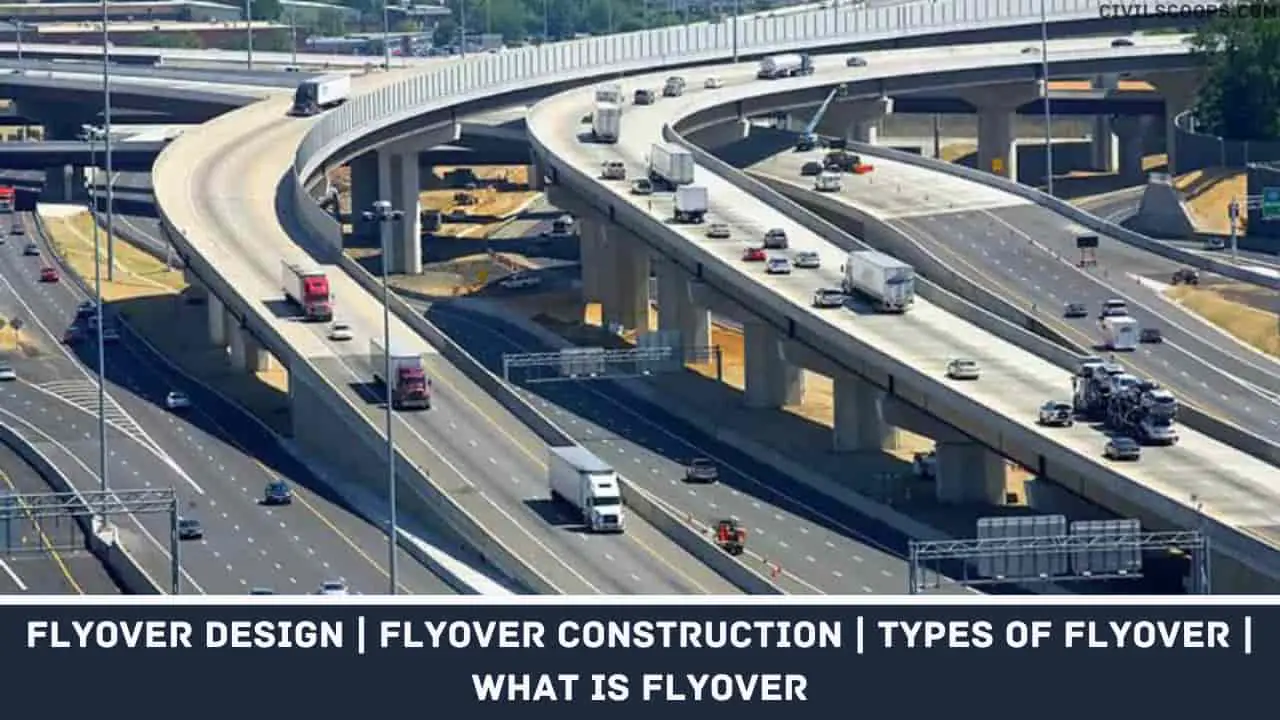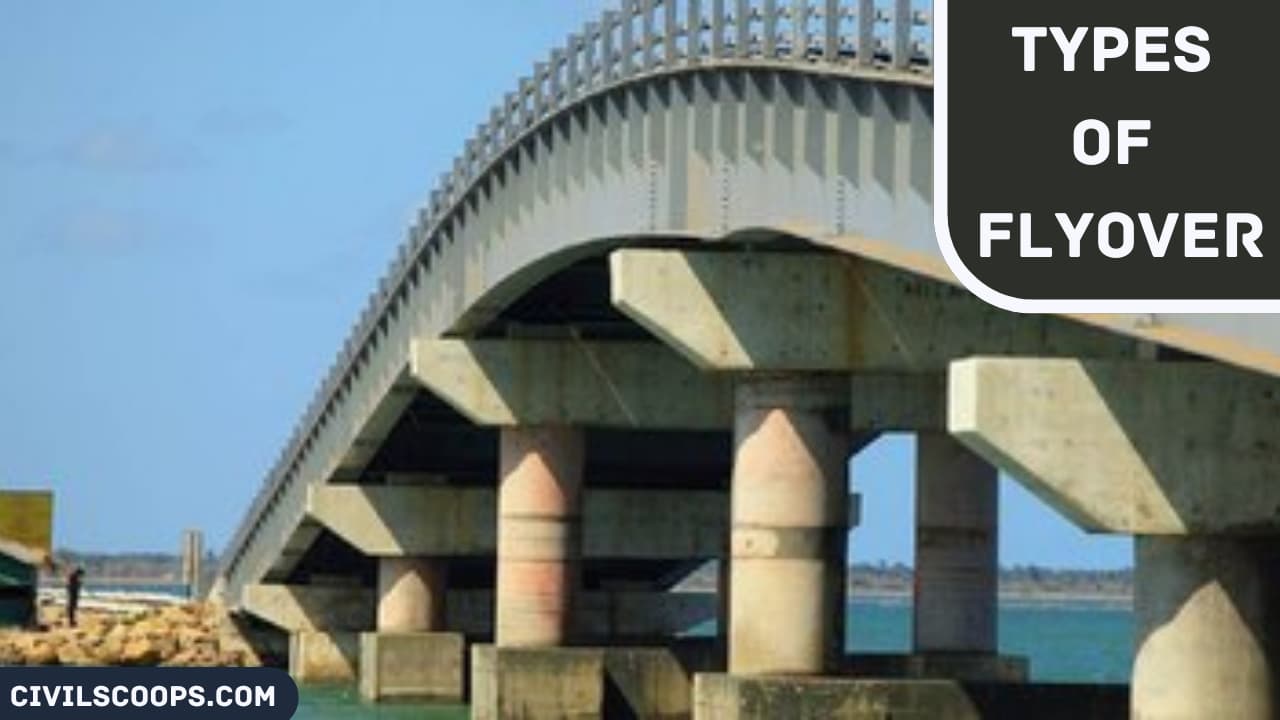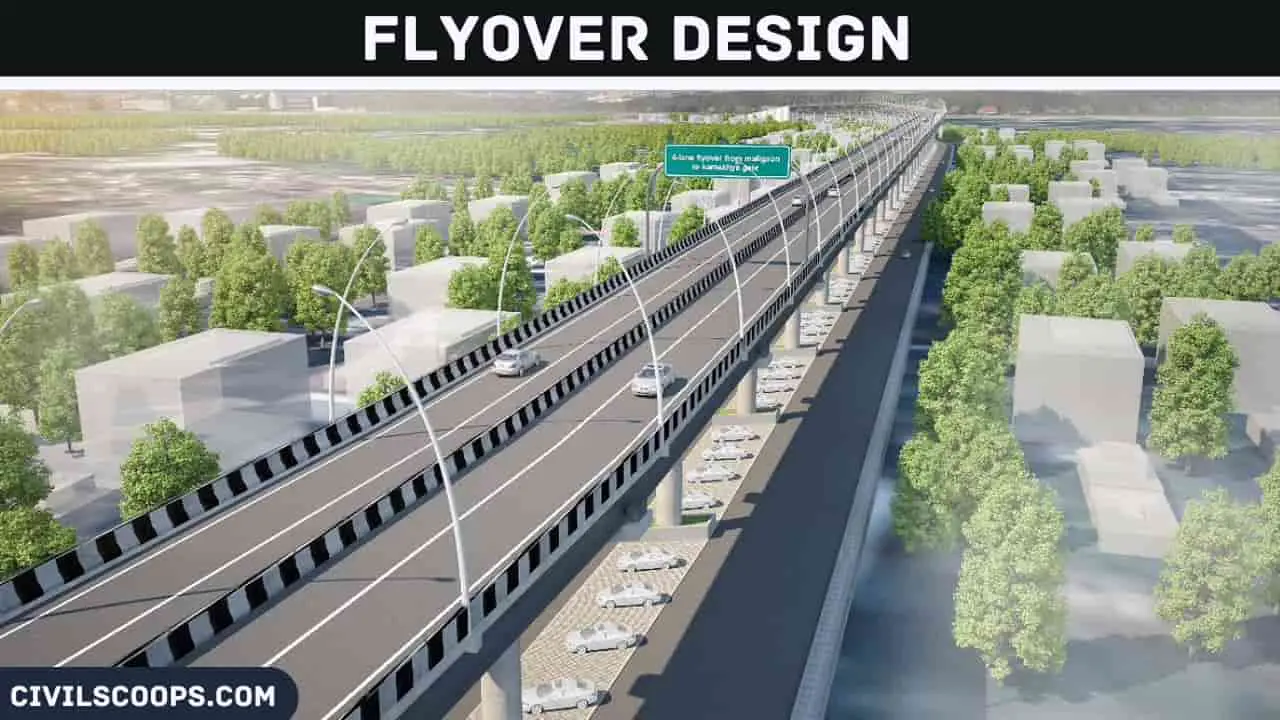What Is Flyover | Types of Flyover | Flyover Design | Flyover Construction

Table of Contents
What Is Flyover?
A Flyover is a bridge that carries one railroad or road over another. Flyover can also be described as an overpass or a high road bridge that crosses a highway or intersection. The difference between the Bridge and Flyover is depending on the purpose of its use and the location where it is being built.
Bridges are built to connect two separate points it is a region that occurs naturally like a valley, river, sea or anywhere other bodies of water, etc. Whereas Flyover is designed to connect two points in congested areas or roads and intersections of roads.
Bridge and flyovers are facilities that provide passage over an obstacle without blocking the path below. The passage required may be a road, railway, or a valley.
Types of Flyover

There are two types of flyovers used for traffic management when crossing the road.
- Simple Flyovers.
- Cloverleaf Junction.
1. Simple Flyovers
In this case, the highway is used for fast traffic, which is made to pass over a high level by a bridge, providing foundations in both directions, and a slow walk is made to pass under.
Traders therefore go through two different levels, and they miss out on the risk. Even after giving a flyover, as we have to continue to provide traffic lights at intersections under the flyover to make anyone approaching in any direction accessible all the other way.
2. Cloverleaf Junction
Cloverleaf Junction is also a type of grade separator. It was first used in America and requires a large land area. All conflicting traffic streams are avoided, so traffic can go at its own pace.
This has a greater advantage than the Simple Flyover, as there is no need to weave and slow down the road. For anyone approaching a cross road there are three ways to go and four ways to approach. Therefore, there should be 4 x 3 = 12 total connectivities.
Also Read: What Is Rolling Margin | Procedure of Rolling Margin
Flyover Design

In recent years Flyover Design plays an important role in reducing and diverting the growing number of traffic in big cities. With the help of a Hydraulic jack the flyover can be transverse vertically. The Flyover is made up of composite materials, namely concrete and metal structures.
Loads are transferred to the depths of the soil with the help of piles foundation. Aluminum and steel structures are used as materials in the structural members of the deck and pier.
Flyover Design is done in order to implement the Flyover where land acquisition costs are high and in densely populated areas. Flyover design is a complex problem, calling ingenuity and practicality while satisfying the basic security and economic requirement.
The basic design philosophy that governs the construction of a flyover is that a structure should be designed to support, with a defined probability of every action that is likely to occur in its intended life span.
In addition, the structure must maintain stability over time and during unprecedented action and should have sufficient firmness during its life span.
India has a rich history of steel bridges and flyovers. This is usually a Flyover that passes through low terrains or at intersections of roads joining long distances with one span or multiple span constructions.
The steel flyover is a good solution for long spans, construction in hilly areas, or terrain conditions. For construction of short and medium flyover, steel and composite concrete are used. In India because of the high population, most cities are saturated and traffic congestion is one of the major problems these cities are facing.
The construction of flyovers is the solution to this problem. But the construction of flyovers using R.C.C is time-consuming, and will affect existing traffic, and has a low-level earthquake resistance. Construction of flyovers using steel sections can overcome this failure however its initial construction costs are high.
The flyover design has three main feature elements. First, the foundation conveys the loaded weight of the flyover to the ground; it contains elements such as columns (also called piers) and abutments. Abutment is the connection between the end of a flyover and a road carried by land which provides support for the final section of the flyover.
Flyover Construction
A flyover is basically a bridge that crosses over another part of the road. For the construction of Flyover one should follow the following steps.
- First, flyover alignment is set and pier areas and cleaning areas are available. If there are a lot of abutments or pillars, they will dig to the right depth and start driving the pile.
- If the construction area has a shallow footing, then they will dig in the right depth, compact the subgrade material, and possibly build a leveling, or rat slab.
- Concrete is placed on the lower part of the foundation, within the suspension, or the ground is used as a form.
- A pier column or abutment concrete is then placed.
- Then build the pier caps and abutments at the same time.
- Then we can place the steel or precast girders, or box girders.
- Then we can work on building the deck with either precast slabs or by laying a concrete deck.
- After that, we can build the railroad or roadway, guardrail, and paint the road markings.
[su_box title=”FAQ” style=”default” box_color=”#333333″ title_color=”#FFFFFF” radius=”3″ class=”” id=””]
Types of Flyover
Here, the 4 different types of Flyover bridge are as follows.
- Classification of Flyover Bridges as Per According to Form.
- Overpass Flyover
- Underpass Flyover
- Classification of Flyover as Per According to Material.
- Composite Flyover
- Steel Flyover
Flyover Design
The Flyover is of 320 m length with 32 spans, 10 m per span. It consists of a deck slab, longitudinal girders, cross girders, deck beam, pier, and foundation. Structural design of one span was made for all the above components.
Flyover Road
An overpass (called an overbridge or flyover in the United Kingdom and some other Commonwealth countries) is a bridge, road, railway or similar structure that crosses over another road or railway. An overpass and underpass together form a grade separation. Stack interchanges are made up of several overpasses.
Flyover Construction
The Flyover is made up of composite materials, namely concrete and metal structures. Loads are transferred to the depths of the soil with the help of piles foundation. Aluminum and steel structures are used as materials in the structural members of the deck and pier.
[/su_box]
[su_note note_color=”#F2F2F2 ” text_color=”#333333″ radius=”3″ class=”” id=””]
Like this post? Share it with your friends!
Suggested Read –
- Difference Between Short Column and Long Column
- What Is Estimate? | Types of Estimate | Advantage of Estimate | Disadvantage of Estimate
- What Is Tie Beam? | Tie Beam Details | Ties in Column | Tie Beam Design | Concrete Tie Beam | Tie Beam Reinforcement Details
- What Is Development Length | Why We Provide Development Length | How to Calculate Development Length | Development Length for Single Bars
- What Is Epoxy? | What Is Epoxy Flooring? | Types of Epoxy Flooring | Advantages of Epoxy Flooring | Disadvantages of Epoxy Flooring | Uses of Epoxy Flooring | Application Process of Epoxy Flooring
[/su_note]
Originally posted 2022-07-17 08:25:50.
